Series: Design Patterns and Analysis | Part 4 of 4 > Developed during Master’s in Web Systems Projects
We’ve reached the final chapter of this design patterns series. Once your objects are built (Creational Patterns ) and structured (Structural Patterns ), the next challenge is interaction.
Behavioral Design Patterns are all about how objects communicate, distribute responsibilities, and respond to events in a flexible, maintainable way.
These patterns help reduce complex conditional logic, prevent tight coupling, and increase clarity.
What Are Behavioral Patterns?
They describe common ways for objects to interact and cooperate, without knowing too much about each other’s internal details.
Use them when:
- You need to change the behavior of objects at runtime
- You want to avoid bloated switch/case blocks or chained if-else
- You want to keep responsibilities focused and interactions modular
Types of Behavioral Patterns
Chain of Responsibility
Passes a request along a chain of handlers until one can process it.
- Intent: Avoid coupling sender and receiver of a request.
- Use When: You have a sequence of handlers with fallback logic.
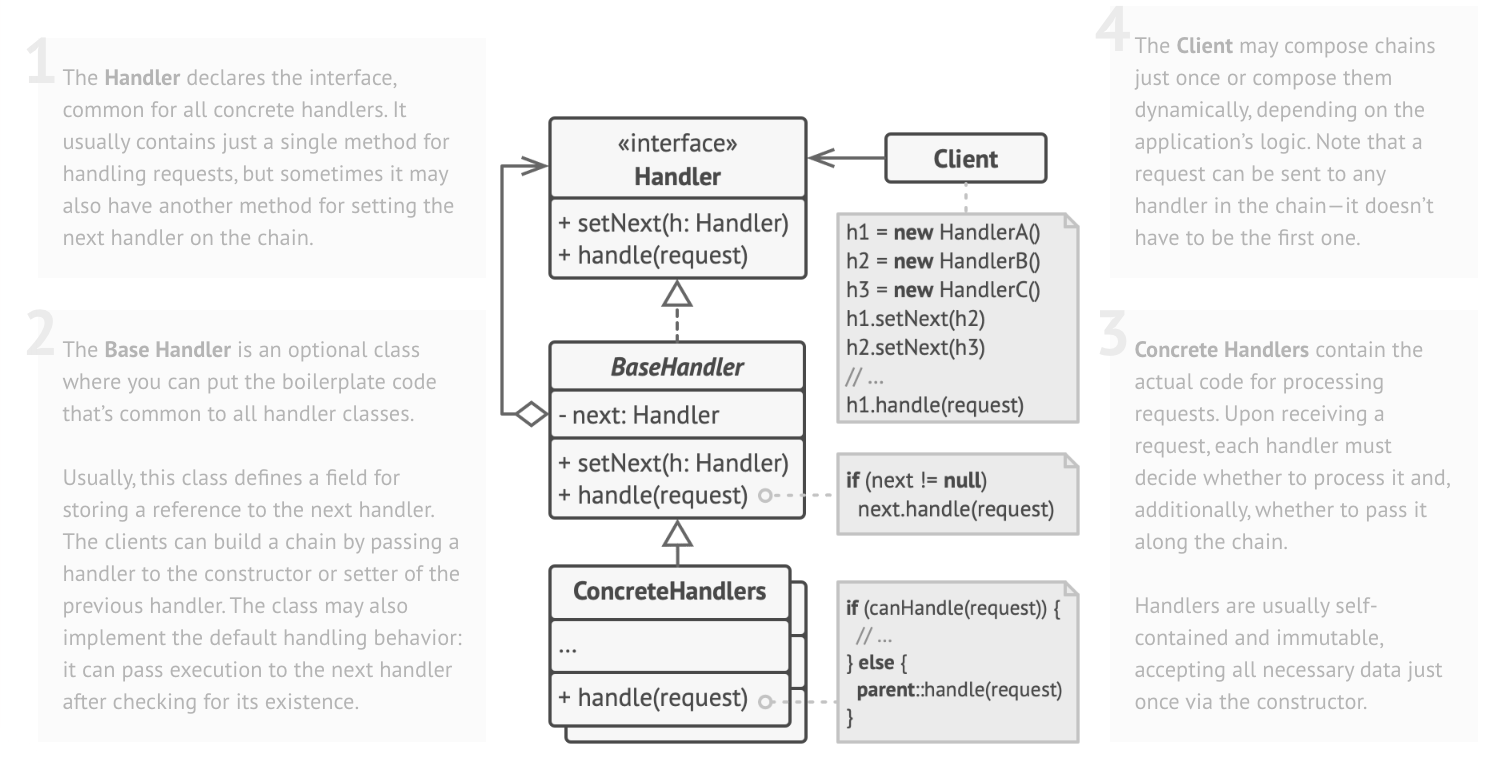
abstract class Handler {
protected Handler next;
public void setNext(Handler next) { this.next = next; }
public void handle(Request req) {
if (canHandle(req)) process(req);
else if (next != null) next.handle(req);
}
}
Command
Encapsulates a request as an object.
- Intent: Parameterize actions with objects, queue operations, support undo.
- Use When: You need action history or task scheduling.
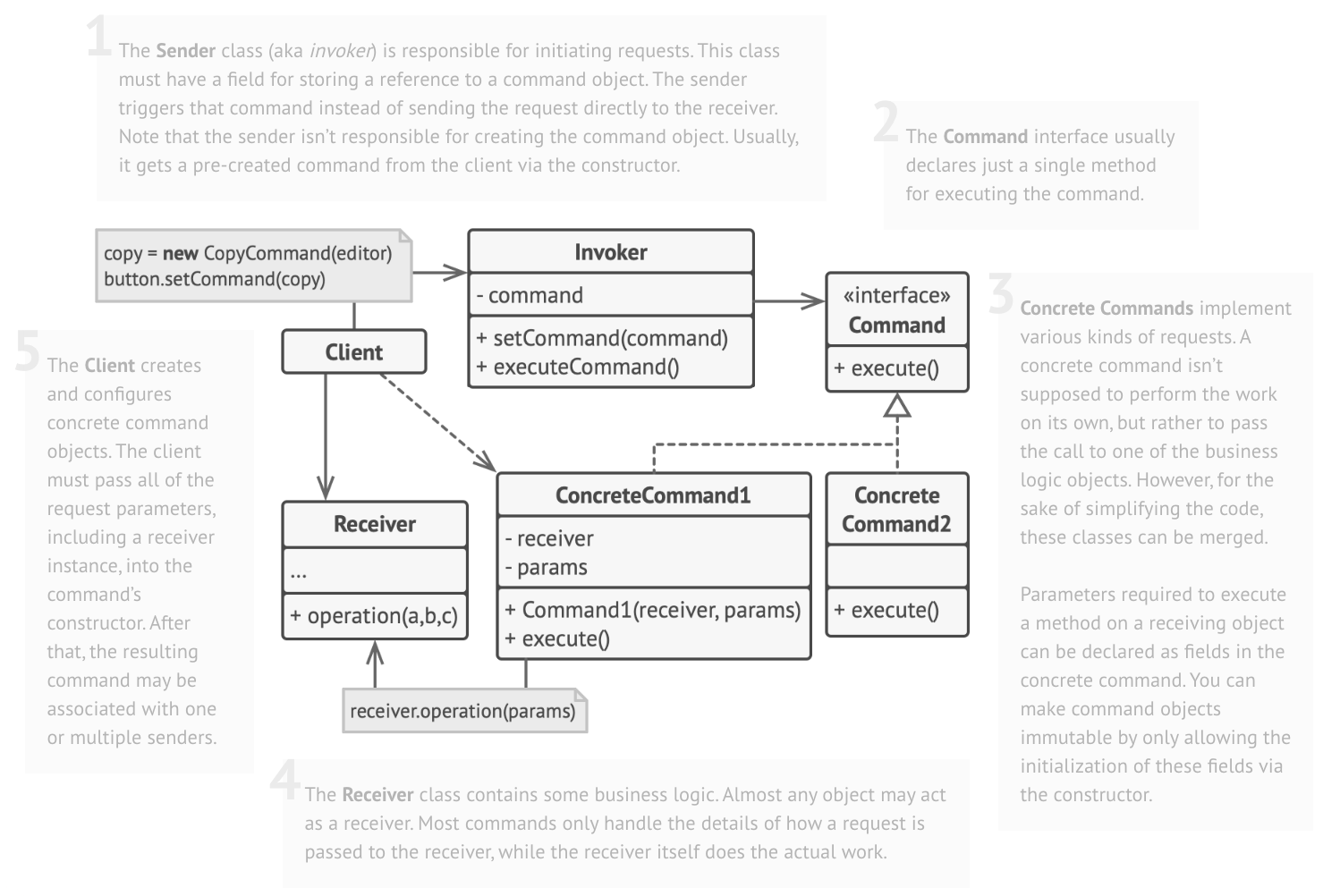
interface Command {
void execute();
}
class LightOnCommand implements Command {
Light light;
void execute() { light.turnOn(); }
}
Iterator
Provides a way to access elements of a collection sequentially.
- Intent: Decouple iteration logic from the collection itself.
- Use When: You want standard iteration across different structures.
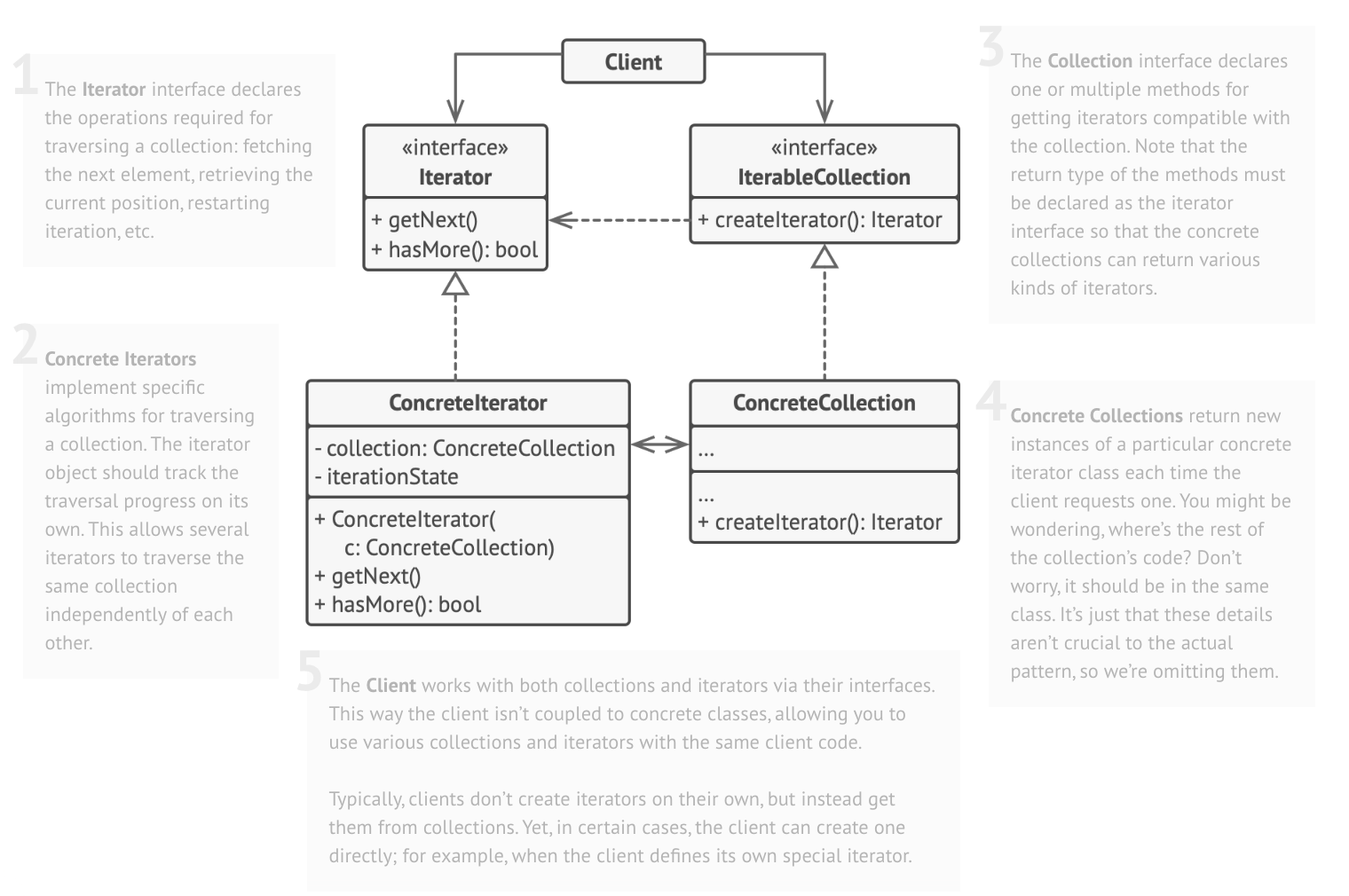
interface Iterator<T> {
boolean hasNext();
T next();
}
Mediator
Centralizes communication between objects.
- Intent: Reduce coupling between components by introducing a mediator object.
- Use When: You have complex many-to-many communication.
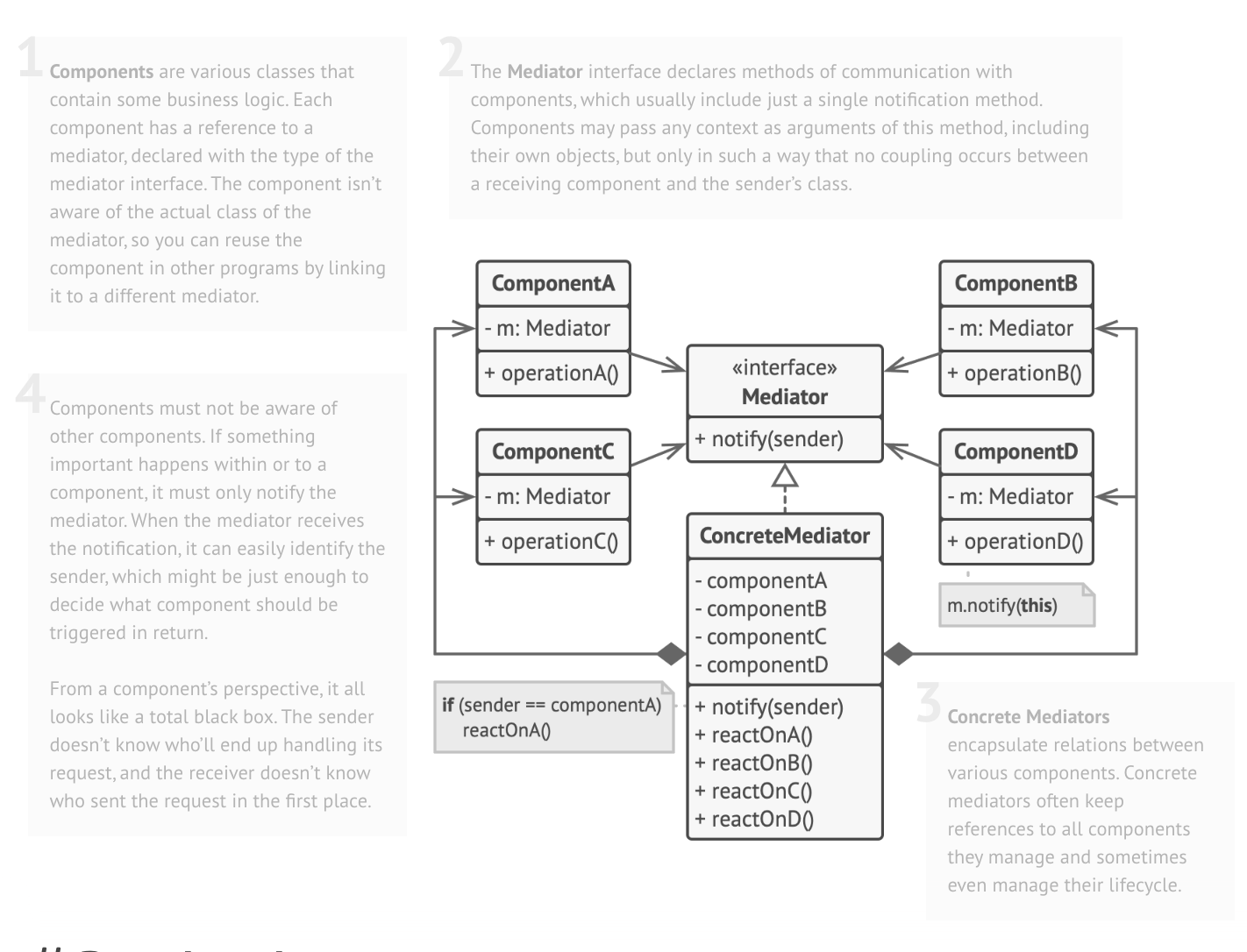
interface Mediator {
void notify(Component sender, String event);
}
Memento
Captures and restores an object’s internal state.
- Intent: Provide undo functionality without exposing internal state.
- Use When: You need checkpoint and restore operations.
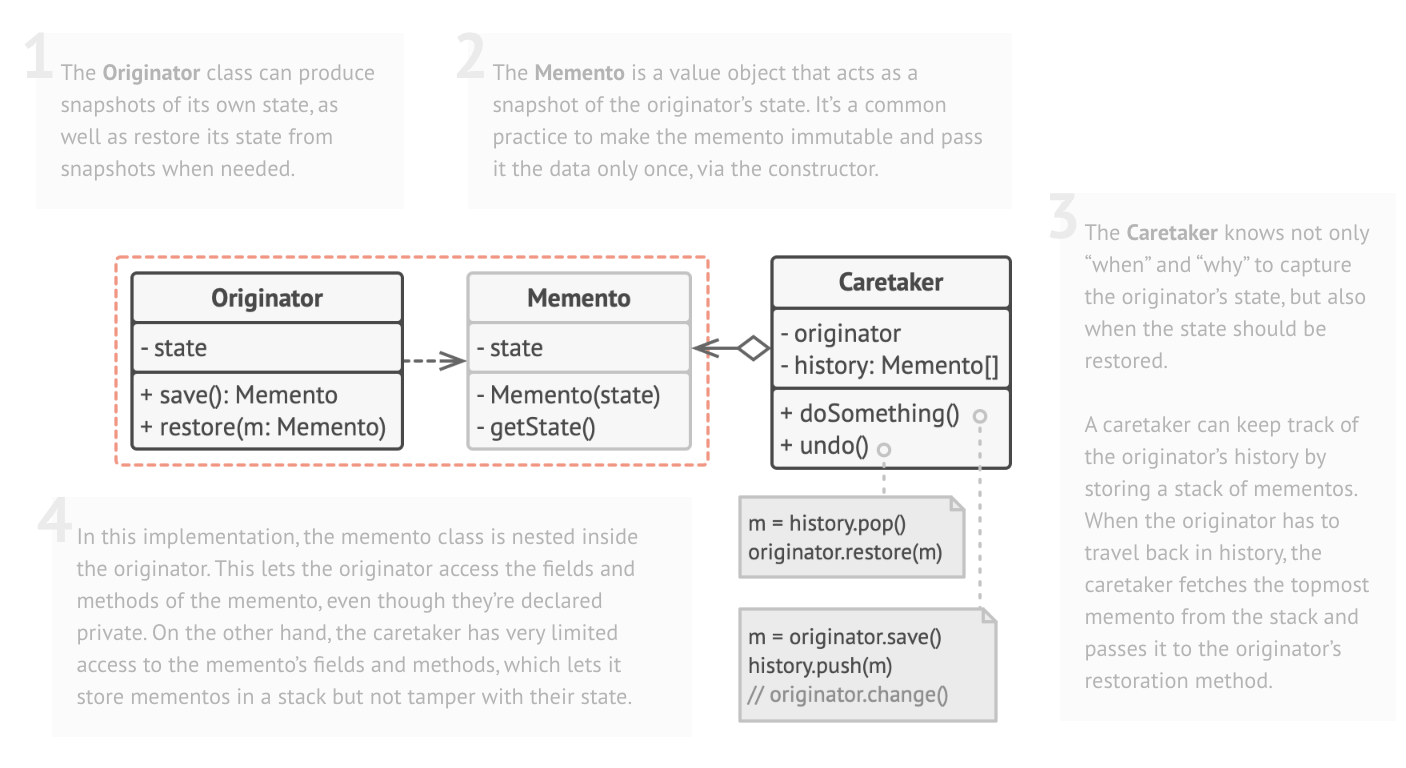
class EditorMemento {
private String content;
public String getContent() { return content; }
}
Observer
Notifies dependent objects when a subject changes state.
- Intent: One-to-many dependency without tight coupling.
- Use When: You want event-driven architecture.
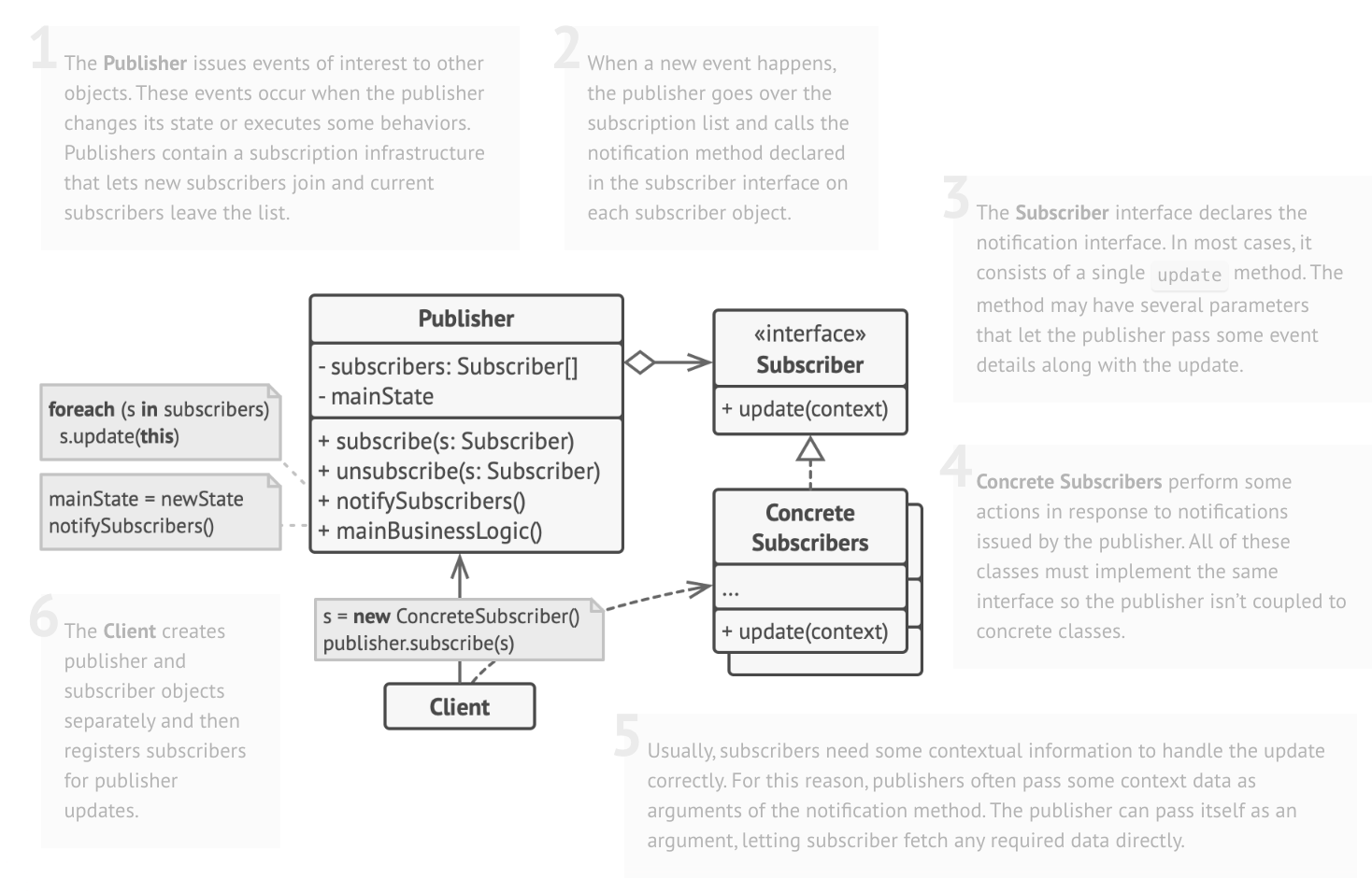
interface Observer {
void update();
}
class Subject {
List<Observer> observers;
void notifyAll() {
for (Observer obs : observers) obs.update();
}
}
State
Changes an object’s behavior when its state changes.
- Intent: Represent different states as objects.
- Use When: You have complex conditional logic dependent on state.
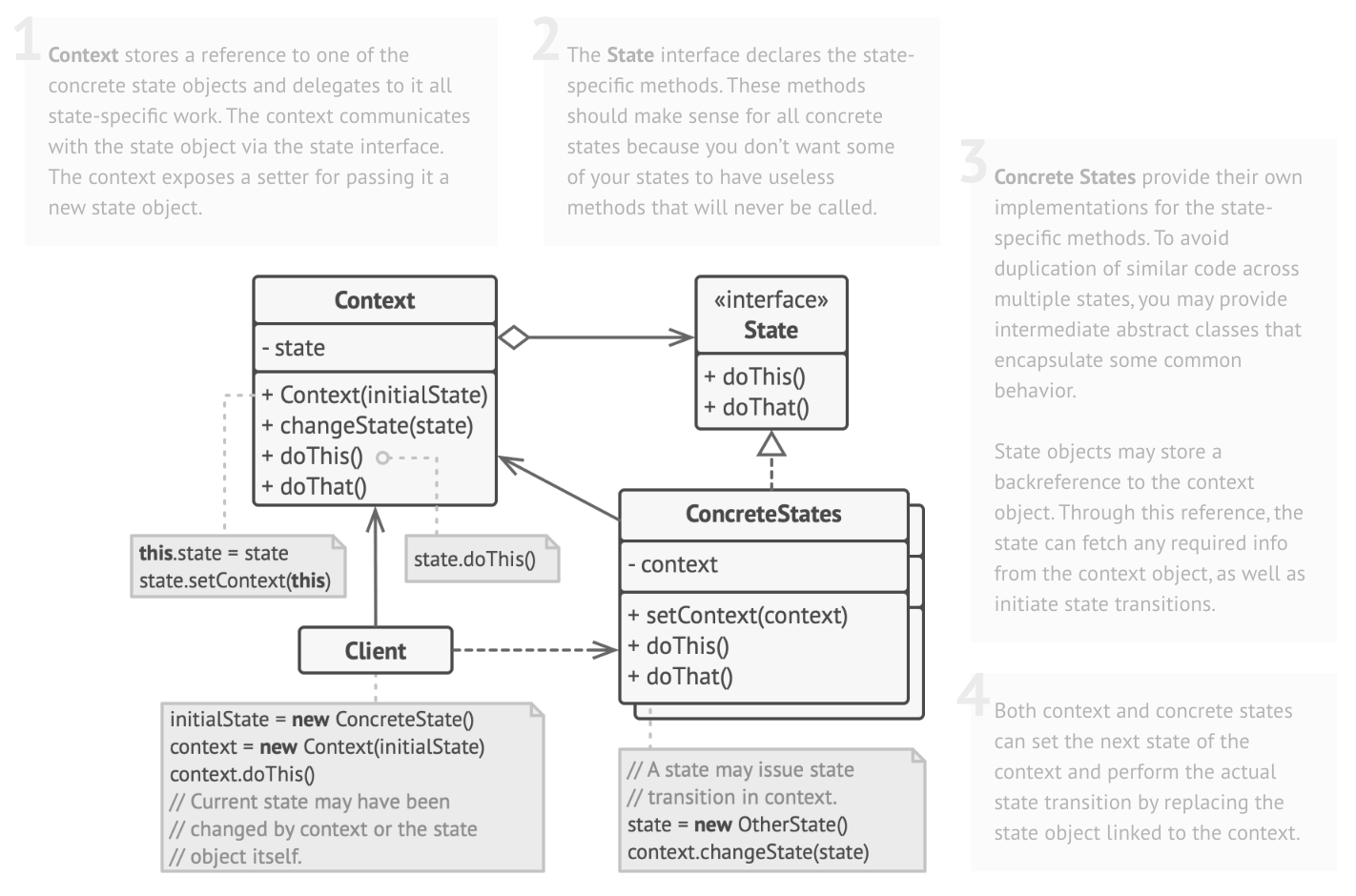
interface State {
void handle(Context context);
}
Strategy
Defines a family of interchangeable algorithms.
- Intent: Separate algorithm logic from the context where it’s used.
- Use When: You want to switch behavior at runtime.

interface SortStrategy {
void sort(List data);
}
class QuickSort implements SortStrategy { ... }
class MergeSort implements SortStrategy { ... }
Template Method
Defines the skeleton of an algorithm, letting subclasses implement steps.
- Intent: Preserve the structure of an operation but allow customization.
- Use When: You want base logic with overridable hooks.

abstract class DataParser {
public final void parse() {
readData();
processData();
writeData();
}
protected abstract void readData();
protected abstract void processData();
protected abstract void writeData();
}
Visitor
Separates operations from the objects on which they operate.
- Intent: Add operations to object structures without modifying them.
- Use When: You need to perform multiple unrelated operations on a structure.
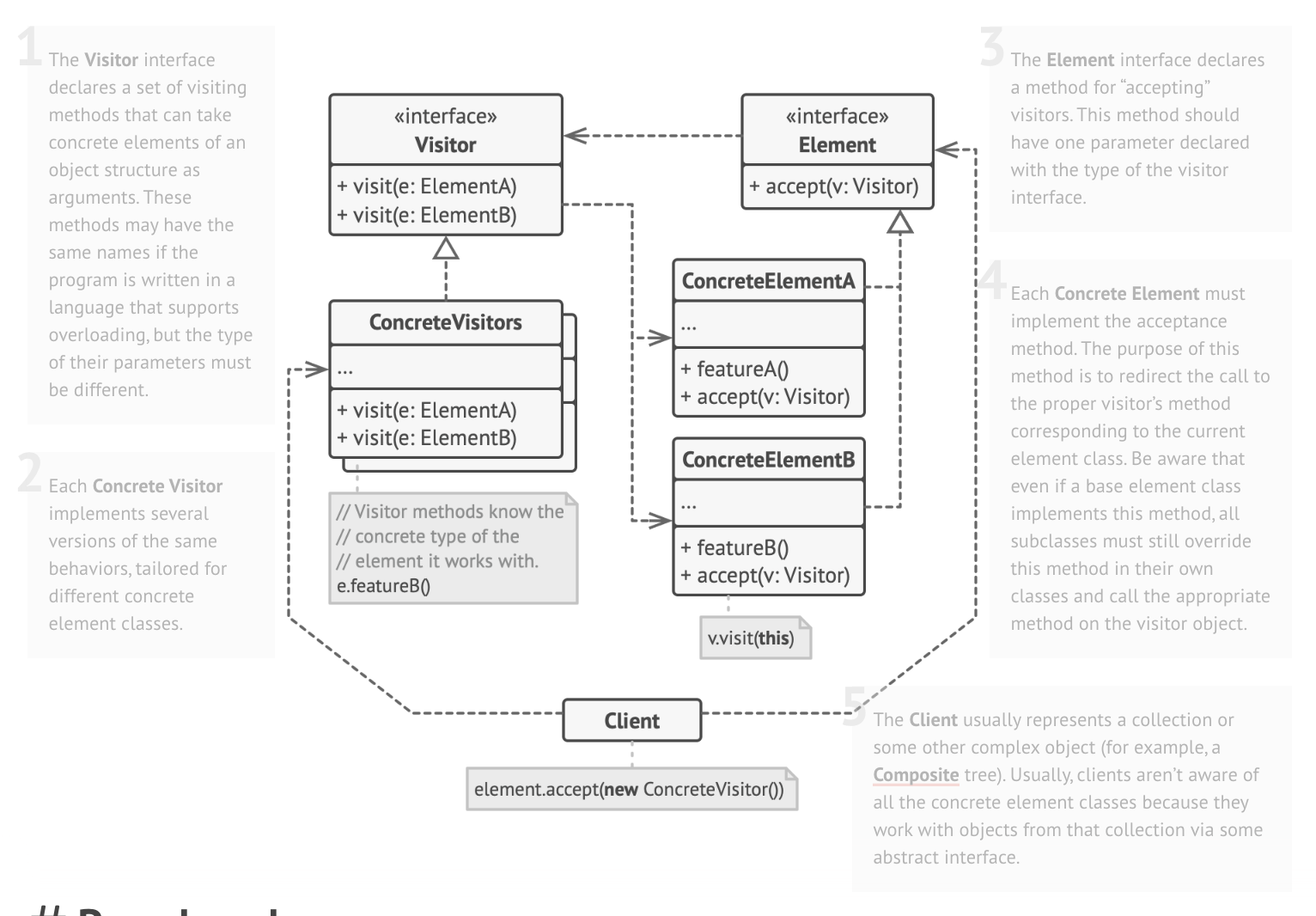
interface Visitor {
void visit(Book book);
void visit(Fruit fruit);
}
Comparison Table
| Pattern | Best For | Helps Avoid |
|---|---|---|
| Chain of Responsibility | Sequential fallback logic | Nested conditionals |
| Command | Action history, UI buttons | Tight sender-receiver coupling |
| Iterator | Standard traversal of collections | Mixing logic and data structure |
| Mediator | Simplifying object communication | Complex dependencies |
| Memento | Undo functionality | Leaky internal state |
| Observer | Event systems, reactive updates | Manual dependency management |
| State | Dynamic behavior changes | Bloated switch statements |
| Strategy | Swappable algorithms | Hardcoded logic |
| Template Method | Custom steps in fixed process | Duplicated code in subclasses |
| Visitor | Operations on object hierarchies | Polluting classes with extra logic |
Final Thoughts
Behavioral patterns provide the rules of interaction for objects in your system. They promote clarity, extensibility, and modularity in how logic is executed and coordinated.
With all three categories explored — Creational, Structural, Behavioral — we now have a solid foundation for software design that balances flexibility, clarity, and evolution.
Series Navigation
- Introduction: Analysis Patterns
- Previous: Part 3 - Structural Patterns
- Current: Part 4 - Behavioral Patterns (Final)
- Complete series: Analysis Patterns | Design Patterns Overview | Creational Patterns | Structural Patterns